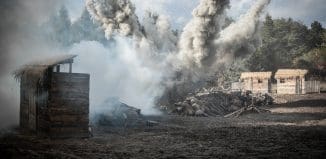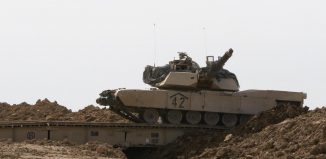DARPA and U.S Army Researchers Work on New IED-Proof Vehicles
This post is also available in:  עברית (Hebrew)
עברית (Hebrew)
The U.S. army has an urgent need for a vehicle that can protect its passengers from improvised explosive devices (IED).

Over the next 18 months, the US Army, DARPA and Alcoa Defense are getting together to work on producing single-piece aluminum hulls for ground combat vehicles which would hope to improve crew protection against buried roadside bombs.
Since a single-piece underbelly would obviously do away with welding seams that can break apart and endanger soldiers when an IED hits the vehicle, the structure would be lighter and more likely to stay in one piece.
IEDs have been the biggest killer of US and coalition troops in Iraq and Afghanistan. “For decades, the Army has recognized the survivability benefits of a single-piece hull due to its thickness, size and shape for ground combat vehicles,” Ernest Chin of the Army Research Laboratory said in a statement.
IHLS – Israel Homeland Security
Alcoa has already designed a single-piece aluminum hull that allows engineers to tailor the thickness where it’s most needed, which also allows for weight saving, since some sections of the hull would be a bit thinner.
According to Defense News, the Army Research Laboratory kicked off its Affordable Protection from Objective Threats program in 2012. An Army planning document explaining the program says the service is looking for “new high performance alloys with little to no exposed weld/joints capable of meeting the next generation underbody blast requirements.”
Alcoa has already helped the Pentagon develop a single-piece forging for the Joint Strike Fighter bulkhead as well as multiple replacement parts using new alloys for the U.S. Air Force.






























